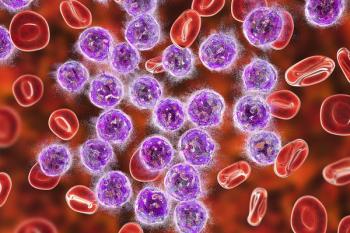
ASCO Guideline Offers Recommendations for Management of Mesothelioma
ASCO recently released a clinical practice guideline on the treatment of malignant pleural mesothelioma, including recommendations on diagnosis, staging, and treatment with chemotherapy, surgical cytoreduction, and radiation therapy.
The American Society of Clinical Oncology (ASCO) released a clinical practice guideline on the treatment of malignant pleural mesothelioma (MPM), including recommendations on diagnosis, staging, and treatment with chemotherapy, surgical cytoreduction, and radiation therapy.
MPM is “an aggressive tumor with a poor prognosis,” wrote the members of the guideline panel, which was co-chaired by Hedy L. Kindler, MD, of the University of Chicago, and Raffit Hassan, MD, of the National Cancer Institute in Bethesda, Maryland. “Given the rarity of this malignancy, there have been few large randomized trials, especially for surgical management of this disease.”
The guideline is based on 222 relevant studies published from 1990 through 2017 and includes a number of recommendations for diagnosis, staging, and treatment. It was
For diagnosis, it is recommended that clinicians perform a thoracentesis when a patient presents with symptomatic pleural effusions, and includes specific instructions for performance of thoracic biopsy. “Cytologic evaluation of pleural fluid can be an initial screening test for mesothelioma,” the authors wrote. However, they note that it is not sufficiently sensitive as a diagnostic test. They also note that it is also important to report a subtype-epithelial, sarcomatoid, or biphasic-as these have specific prognostic significance.
Once a diagnosis is made, a CT scan of the chest and upper abdomen using IV contrast is recommended for initial staging. FDG PET/CT should generally be used, but can be omitted when patients are not being considered as candidates for definitive surgical resection. Radiologists should be involved with measurement of mesothelioma on CT scans, based on modified Response Evaluation Criteria in Solid Tumors (RECIST) criteria.
Chemotherapy remains the primary therapy for MPM, and the guidelines note that it should be offered to patients and that it improves survival and quality of life. Recommended first-line chemotherapy is pemetrexed plus platinum, though the authors noted that clinical trials should also be offered to eligible patients. Bevacizumab can improve survival when added to chemotherapy in certain patients, but it is not recommended in patients with certain comorbidities or disease characteristics.
The guideline includes a “strong recommendation” that selected patients with early-stage disease undergo “maximal surgical cytoreduction.” However, even in eligible patients this is generally not sufficient, and chemotherapy and/or radiation therapy will still be required. Radiation therapy can be offered as a palliative therapy with symptomatic disease, as well as to patients with localized asymptomatic recurrence, among others.
The authors also noted that although no new MPM drugs have been approved in more than a decade, advances in the understanding of the biology of the malignancy has helped identify promising new targets. “Ongoing clinical trials suggest promising activity of several new agents in MPM, but they are not sufficiently mature to make treatment recommendations,” they wrote.
Newsletter
Stay up to date on recent advances in the multidisciplinary approach to cancer.





















































































